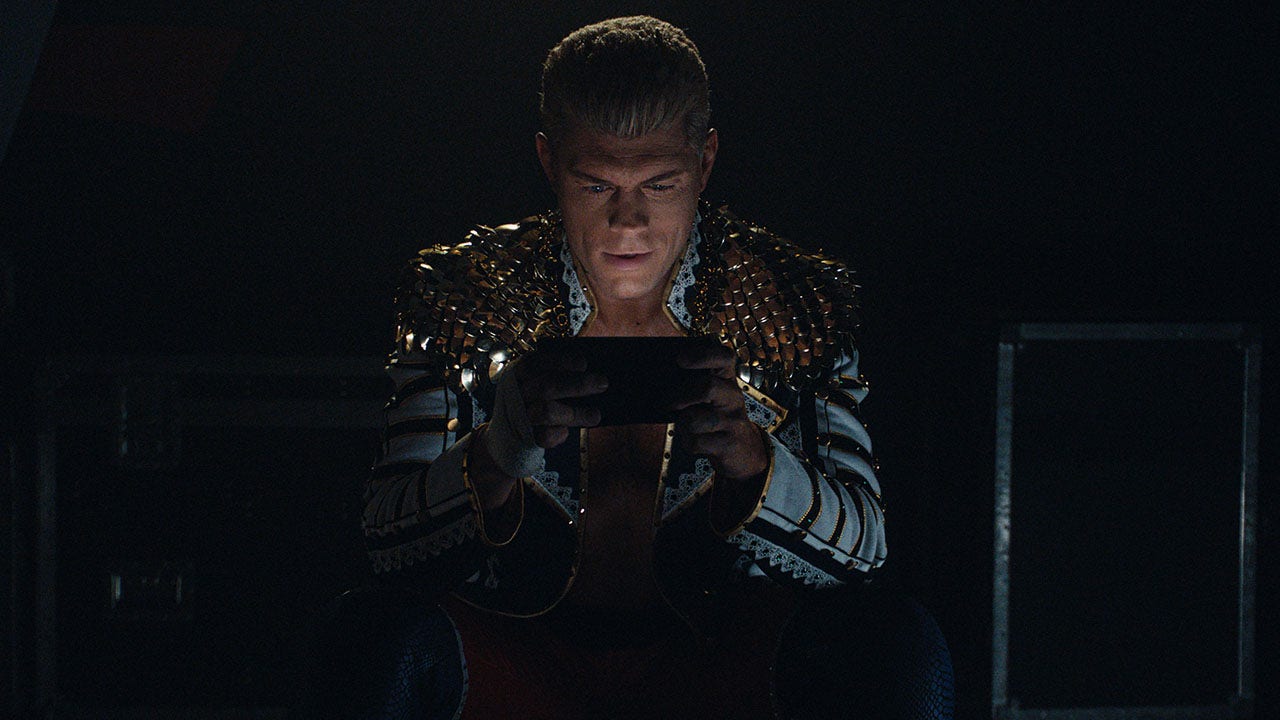Behind some of the city’s most beautiful murals, there are ugly truths and sordid stories.
A newly reissued book spotlights 32 stunning, large-scale paintings that lend beauty to everyday facets of city life — from office building lobbies to transit stations and public restrooms — and the fascinating stories behind them.
“It’s probably the greatest collection of popular art in the world … the breadth, the variety, the expertise,” Glenn Palmer-Smith, the author of “Murals of New York City: The Best of New York’s Public Paintings from Bemelmans to Parrish” (Rizzoli, out now), told The Post.
The 83-year-old, who put together the tome with photographer Joshua McHugh, is both an art scholar and artist himself.
He worked on restoring the famous murals at Bemelmans Bar and Cafe Carlyle in the Hotel Carlyle, and he and his son, Austin, paint their own murals out of a space in Harlem, Palmer-Smith Studio.
Here, he shares five murals and the surprising stories behind them.
The mayor’s mistress is at the courthouse
Look closely at the ceiling of the Neoclassical New York County Supreme Courthouse. Instead of a Roman holding a spear, there’s a naked blond lady with a mirror. The woman who posed for the painting was Betty Compton, a Ziegfeld Follies showgirl and the mistress of NYC mayor Jimmy Walker, who served the city from 1926 to 1931 — a wry touch added by Italian artist Attilio Pusterla
“He took some artistic license,” Palmer-Smith said. “That’s the beauty of murals. Nobody is going to get up there and paint it over.”
Walker was charged with taking more than a million dollars in bribes, resigned, ditched his wife and set sail for Europe with Betty. He was “New York’s most colorful mayor ever,” writes Palmer-Smith.
NYS Supreme Court, 60 Centre St.
No one liked the Radio City Music Hall mural
In 1931, Michigan-native Ezra Winter spent six months creating “Quest for the Fountain of Eternal Youth” to hang in the theater’s stairway. But the painting was harshly criticized and Winter, who was desperate to be taken seriously as an artist, was crushed. In 1949, he walked into the woods near his Connecticut home and studio and shot himself.
Now the sweeping mural, which is based on an Indian legend and shows an old man coming to terms with his life, is considered a beautiful classic.
Radio City Music Hall, 1260 Avenue of the Americas, Midtown
…And Georgia O’Keefe’s husband said she was too good to paint the bathrooms
The renowned modernist painter was initially set to paint the Radio City woman’s lounge and had signed a contract to do so for $1,500. But, O’Keefe’s husband, photographer Alfred Stieglitz, thought that the paltry payment would make her paintings worth less and put a stop to it.
“He said you can’t paint bathrooms, you’re far too great a painter for that,” Palmer-Smith told The Post, noting that at the time her paintings were going for $5,000, while a Picasso was only fetching a few hundred bucks.
Japanese artist Yasuo Kuniyoshi painted the lounge instead, nodding to O’Keefe’s original plans with flower imagery, while adding Asian elements. O’Keefe had a nervous breakdown soon after dropping off the project.
Radio City Music Hall, 1260 Avenue of the Americas, Midtown
John Jacob Astor IV is farting at the St. Regis
Get a little tipsy at the hotel’s famed King Cole Bar and a bartender might reveal what’s really happening in the imagery behind the bottles.
Famed artist Maxfield Parrish was a Quaker and teetotaler who was hesitant to decorate a watering hole, but he couldn’t resist the $5,000 commission being offered by John Jacob Astor IV in 1906 to do a piece for the bar at the Knickerbocker Hotel. (The hotel later closed and the mural eventually found its way to the St. Regis.)
Astor had an annoying request — he wanted to be portrayed as Old King Cole in the painting. Parrish abided, but he also fulfilled a dare that some of his artist buddies had come up with — somehow painting a fart in the scene.
Astor appears as King Cole, but his bemused expression — and the laughing jesters flanking him — suggests he’s just passed gas. “It was a joke on Astor, his ego was almost Trumpian, as was Maxfield Parrish’s,” said Palmer-Smith, who noted that Astor never acknowledged how he’d been portrayed.
King Cole Bar at The St. Regis New York, 2 East 55nd St., Midtown East
Diego Rivera was fired from Rockefeller Center
In 1933, Rivera, then one of the most famous mural painters in the world, was hired by the Rockefellers to paint the lobby of what was then known as the RCA building. However, Rivera was also famed for being an outspoken communist, making him an awkward fit for beautifying a monument to capitalism
He cheekily put in imagery of Vladimir Lenin, and of the Rockefeller men frolicking with floozies at a bar. When he refused to remove Lenin, he was swiftly fired by Norman Rockefeller.
Security guards escorted Rivera, who twice married fellow artist Frida Kalho, from the building. The piece was covered for months and then removed with hammers and chisels in February of 1934.
It was replaced with José María Sert’s “American Progress.” Rivera had his assistant take pictures of his work before it was destroyed and it served as inspiration for pieces he did in Mexico City.
Rockefeller Center, 30 Rockefeller Plaza, Midtown
Grand Central’s beautiful ceiling is a big mixup
Architect Whitney Warren had planned for Grand Central Terminal’s main hall to have a skylight, but budget issues impeded his vision. As an alternative, he hired French painter Paul César Helleu to paint the sky on the 80,000-square-foot ceiling.
Helleu worked with an astronomy professor on the starscape, but the professor gave him a 17th-century astrological atlas that showed the stars from “God’s point of view” — not someone looking up at them.
As such, the mural, which was ultimately completed by Australian Charles Basing, shows most of the constellations in reverse. Only the perspective of Orion the Hunter is correct. An amateur astronomer picked up on the mistake shortly after the terminal opened in February of 1913 and went to the New York Times with the information.
The Vanderbilts were “embarrassed,” writes Palmer-Smith and “insisted that the mistake was intentional.”
Grand Central Terminal,89 E. 42nd St., Midtown East
Read the full article here















